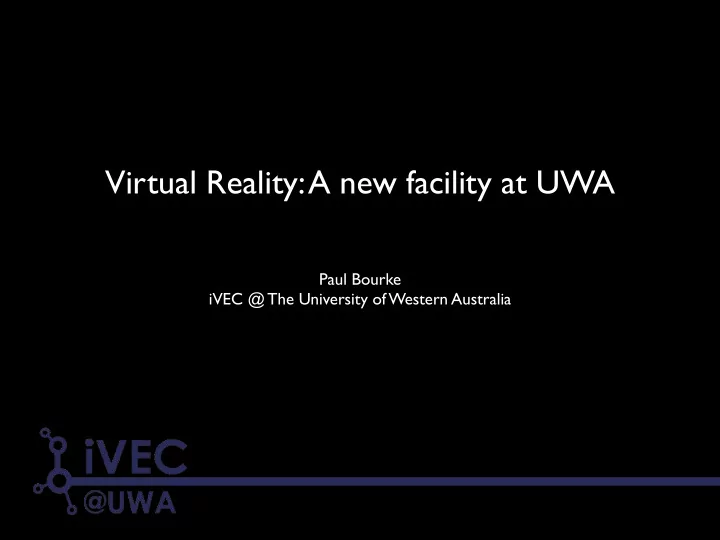

Virtual Reality: A new facility at UWA Paul Bourke iVEC @ The University of Western Australia
Details • Funded by an EIF grant to the National Geosequestration Laboratory (NGL), in support of visualisation in Geophysics (CI Prof Lumley) • 3x3 tile of 1920x1080 pixel panels, so approximately 6000x3000 pixels. • Capable of stereoscopic output at that resolution. • Includes tracking system for viewers head and two input devices. • Follows previous presentations on the Oculus Rift and iDome. Alternative means to achieve immersion.
Presentation • Will show some general content first - high resolution images - stereoscopic images - 3D models at scale and resolution - stereoscopic movies - 3D models without head tracking • Two head tracked and game controller examples. Both based upon the Unity3D game engine. - Reconstructed indigenous rock shelters Courtesy CRAR+M (Centre for Rock Art Research and Management) - Beacon Island
Why head tracking? • Stereoscopic viewing is only strictly correct from one view position. Typically designed for the centre of the screen and some distance back. • Away from that position depth is distorted. - Moving left and right introduces a shear. - Moving forward and back scales depth. • We are insensitive to this for monoscopic images, they are on a canvas so clearly 2D. • We quickly adapt to the distortion when watching a stereoscopic movie, sitting still. • Weird distortion effects without head tracking and one moves around ... see demonstration later.
Correct way of thinking • Any digital image of a virtual world should be created by imagining looking through a window on the world. • The window is the display frame. • The intended viewer is at the location of virtual camera through which the world is being viewed. • If the viewer moves with respect to the display frame then the rendered image should change. • Parts of the world that are visible change depending on the position of the viewer. • Obviously not possible for images or movies, but possible for realtime generated content.
Part of the world visible Display surface = Window on the world Top view Viewer position = Virtual camera
Parts of the world visible from Parts of the world visible from viewer position 1 but not position 2 viewer position 2 but not position 1 Viewer posiiton 2 Viewer posiiton 1
Recommend
More recommend